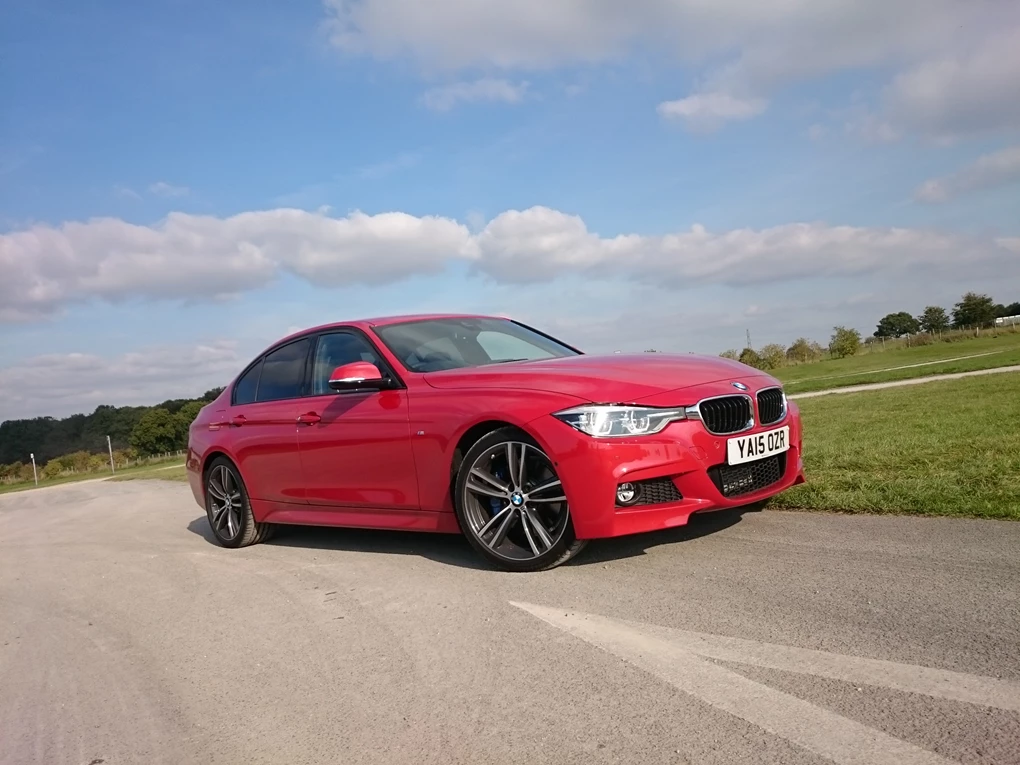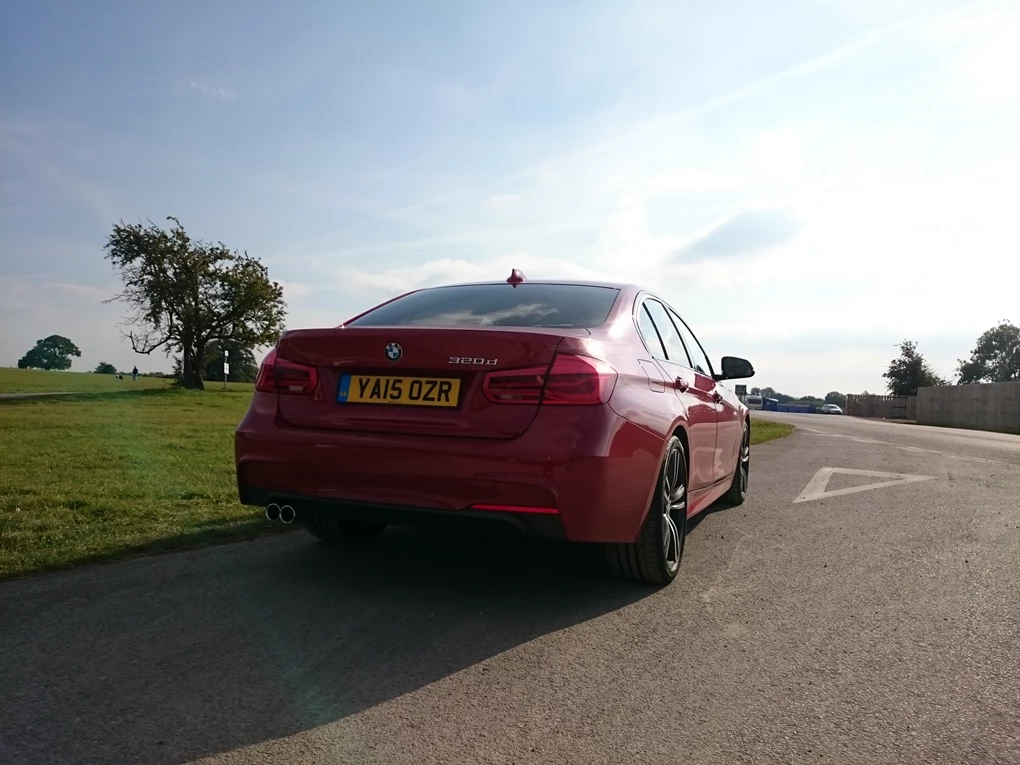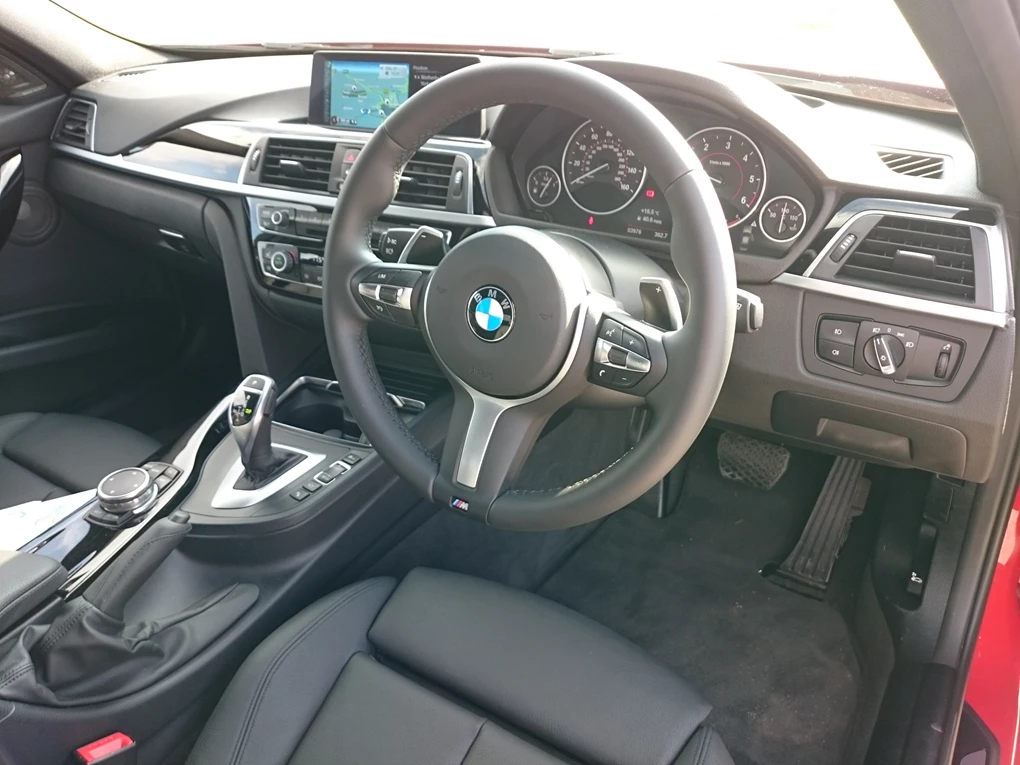The BMW 3 series is an executive saloon car rivalling the Mercedes C-Class, Audi A4 and Lexus IS. The latest generation of this iconic model continues most of its traits, offering sharp handling, impressive engines and rear-wheel drive. But, it’s also more comfortable than before and has far better space in the back seats for taller passengers.
Being better than ever, it continues to win over drivers who need to cover large distances, but also appreciate excellent handling away from the motorway, as well as the latest in infotainment and safety technology. Updated for 2015, it now has subtly tweaked styling, courtesy of new lights and improved cabin materials. New engines have also arrived, further improving efficiency and making several version of the 3 Series cheaper to run than many superminis.

Performance
Petrol engines range from the humble-sounding 318i up to the 340i, with acceleration figures ranging from a respectable 0-62mph in 10.7 seconds to a sports car-like 4.8 seconds. The 318i and 320i should suit most drivers around town and on the motorway, but the 330i and 340i offer driving enthusiasts serious performance, with a soundtrack to match.
Most British buyers are likely to plump for a diesel and the 320d is perhaps the consummate all-rounder, with 187bhp and 0-62mph coming up in just 7.3 seconds, allied to excellent economy. There’s also a 316d (a little sluggish) and a well-rounded 318d, as well as the incredibly quick 330d (0-62mph in 5.6 seconds) and 335d xDrive, fitted with four-wheel drive and able to hit 62mph quicker than a Volkswagen Golf R. Most versions are fitted with a six-speed manual gearbox as standard, but an excellent automatic is also available, offering smooth and responsive shifts.

Ride and Handling
It still has a healthy lead over the Audi A4 and Mercedes C-Class when it comes to driver enjoyment.
The BMW 3 Series has a reputation for fine handling, with perfect 50:50 weight distribution and rear-wheel drive. The latest version certainly upholds this tradition, with weighty but communicative steering, taut suspension and very little body roll. It still has a healthy lead over the Audi A4 and Mercedes C-Class when it comes to driver enjoyment. Unlike some past 3 Series, this largely comes without the trade-off of poor ride comfort, thanks to a new suspension design and more testing on UK roads. Still, it goes without saying that entry-level models with smaller alloy wheels and softer suspension offer the best comfort levels. It’s wise to test drive an M-Sport model before committing to the large alloys and stiff chassis, no matter how good they look. New for the latest model is the option of four-wheel drive, or xDrive as BMW calls it. Available with models starting from the 320d and 320i, it could be useful if you live in an area used to poor weather conditions, and helps BMW stay competitive with Audi, who heavily market its quattro four-wheel drive system in the A4.

Interior and Equipment
The BMW 3 Series was launched in 1975 and is now in its sixth generation. It’s BMW’s best-selling model, accounting for almost a third of its total sales.
The dashboard has a business-like style matching the 3-Series to a tee, but can also be brightened up with a coloured swathe of trim in Sport versions. Everything feels well constructed and sturdy, while the driver-focussed dashboard helps place controls within easy reach. Most models come fitted with a large and attractive screen, controlled via iDrive buttons on the centre console. BMW has increased the wheelbase of the latest 3-Series, significantly improving cabin space and luggage room. While the rear seats used to be cramped for adults, there’s now plenty of room for six-footers to travel in comfort behind someone similarly tall. The driving position itself is low-slung, with lots of adjustment, although we had some trouble getting used to the way the manual adjusters worked. A boot measuring 480-litres is large enough to swallow enough suitcases for a family holiday, although the fact only the boot lid opens can restrict loading bulky items. In this case the 3-Series Tourer is a better bet, thanks to its larger hatchback.
Cost
An excellent brand reputation for performance, reliability and economy means the 3 Series enjoys high demand in the used car market.
BMW is building some of the finest engines on the market, and a prime example is the one fitted in the 320d Efficient Dynamics. This boasts 161bhp, yet the automatic will return 74.3mpg and emits just 99g/km of CO2, costing less than a pub meal to tax each year. It can achieve these figures thanks to standard stop/start, low rolling resistance tyres and an aerodynamic bodykit. If you choose a petrol, the 318i, 320i and 330i all manage over 40mpg, despite their performance differences. The 340i is thirstier though, managing 36.7mpg, despite the fact it’s slightly slower than the 51mpg 335d. For 2016 the 330e Plug-in hybrid has arrived, with a 2.0-litre 181bhp petrol motor coupled with an 80kW electric motor, capable of 134.5mpg and CO2 emissions of 49g/km. The 330e can travel for around 22 miles in all-electric mode, from a full charge. An excellent brand reputation for performance, reliability and economy means the 3 Series enjoys high demand in the used car market, keeping prices high and helping reduce the overall cost of owning the car.
Our Verdict
The BMW 3 Series is consistently one of the most searched for cars on the internet, and the latest version does a great job of upholding its reputation. It drives as well as it has ever done, yet does so using less fuel, while offering more space and equipment. There will be some who prefer the character of the cabin in the Mercedes C-Class and its overall comfort, but for most the extra poise of the 3-Series should be enough to win them over. It will take an incredible car to knock it from its perch.




